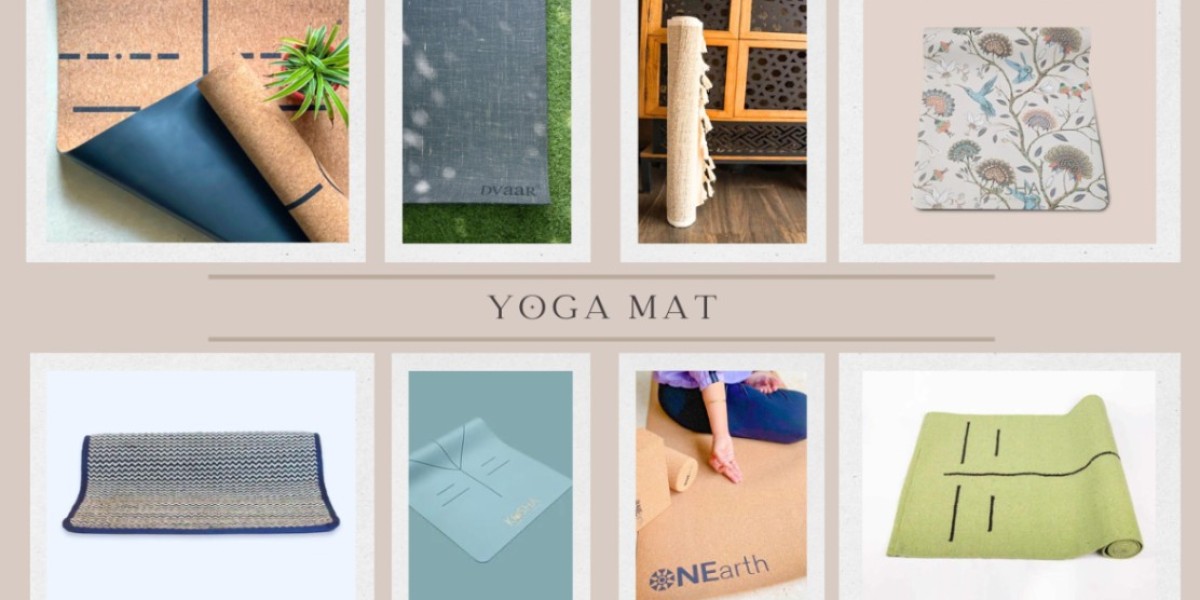As more people become conscious of their environmental footprint, the demand for eco-friendly yoga mats has surged. These mats not only support your practice but also align with a commitment to sustainability and mindfulness. In this blog, we will explore the importance of eco-friendly yoga mats, the materials used, benefits, and how to choose the best one for your practice.
## The Importance of Eco-Friendly Yoga Mats
### Aligning Practice with Values
Yoga encourages mindfulness and respect for all living beings, which extends to the environment. Using eco-friendly yoga mats ensures that your practice supports these values. Conventional yoga mats, often made from PVC (polyvinyl chloride), can be harmful to the environment and human health. Eco-friendly alternatives provide a way to practice yoga while minimizing environmental impact.
### Reducing Environmental Footprint
Eco-friendly yoga mats are typically made from sustainable materials that are biodegradable or recyclable. By choosing these mats, you help reduce the waste that ends up in landfills and decrease the demand for non-renewable resources. This shift is essential in combating pollution and preserving natural ecosystems.
## Materials Used in Eco-Friendly Yoga Mats
### Natural Rubber
Natural rubber is one of the most popular materials for eco-friendly yoga mats. Harvested from rubber trees, it is biodegradable and provides excellent grip and cushioning. However, it is important to note that natural rubber mats may not be suitable for individuals with latex allergies.
### Cork
Cork yoga mats are made from the bark of cork oak trees, which regenerate after harvesting. Cork is naturally antimicrobial, offering a hygienic surface for your practice. It also provides a unique texture and grip that improves with moisture, making it ideal for hot yoga sessions.
### Jute
Jute is a natural fiber derived from the jute plant. Jute yoga mats are durable, biodegradable, and provide a firm, textured surface. They are often blended with PER (Polymer Environmental Resin) to enhance durability while maintaining eco-friendliness.
### Organic Cotton
Organic cotton yoga mats are soft, absorbent, and made without harmful chemicals. These mats are often used as covers for other types of mats to provide additional comfort and support. They are machine washable, making them easy to maintain.
### TPE (Thermoplastic Elastomer)
TPE is a synthetic material that is more environmentally friendly than PVC. It is recyclable and free from harmful chemicals like phthalates and heavy metals. TPE mats offer a good balance of grip, cushioning, and durability.
## Benefits of Eco-Friendly Yoga Mats
### Health Benefits
Eco-friendly yoga mats are free from toxic chemicals found in conventional mats. This ensures that you are not inhaling harmful substances during your practice, which can have long-term health benefits.
### Enhanced Performance
Materials like natural rubber and cork provide superior grip, which can enhance stability and performance during yoga poses. This is particularly beneficial for practices that involve a lot of movement and balance, such as Vinyasa or Ashtanga yoga.
### Durability and Longevity
Eco-friendly yoga mats are often more durable than their conventional counterparts. High-quality materials like natural rubber and cork can withstand regular use without breaking down, providing a long-lasting surface for your practice.
### Aesthetic Appeal
Eco-friendly yoga mats come in a variety of natural textures and colors, offering a visually pleasing addition to your practice space. The natural materials used in these mats often have unique patterns and designs that add to their aesthetic appeal.
## How to Choose the Best Eco-Friendly Yoga Mat
### Consider Your Practice
The type of yoga you practice can influence the type of mat you need. For instance, if you practice hot yoga, a cork mat may be ideal due to its improved grip with moisture. If you prefer a gentler practice like Yin yoga, a natural rubber mat with extra cushioning might be more suitable.
### Thickness and Cushioning
The thickness of the mat can affect comfort and support. Thicker mats provide more cushioning, which can be beneficial for those with sensitive joints or for practices that involve a lot of kneeling. However, thinner mats offer better stability and connection to the ground, which is important for balance-focused practices.
### Portability
If you travel frequently or like to take your mat to different locations, consider the weight and portability of the mat. Materials like TPE are lightweight and easy to roll up, making them convenient for on-the-go practices.
### Eco Certifications
Look for mats that have eco-certifications, such as OEKO-TEX or GOTS (Global Organic Textile Standard). These certifications ensure that the materials and manufacturing processes meet high environmental and safety standards.
### Personal Preferences
Ultimately, personal preferences play a significant role in choosing the right mat. Consider factors like texture, color, and overall feel. It’s important to select a mat that you feel comfortable and connected with, as this can enhance your overall yoga experience.
## Popular Eco-Friendly Yoga Mat Brands
### Manduka
Manduka is renowned for its high-quality, eco-friendly yoga mats. Their eKO series is made from natural rubber and offers excellent grip and durability. Manduka also focuses on sustainable manufacturing processes and uses non-toxic materials.
### Liforme
Liforme mats are made from natural rubber and eco-polyurethane. They are known for their unique alignment markers, which help practitioners maintain proper posture. Liforme mats are biodegradable and free from harmful chemicals.
### Jade Yoga
Jade Yoga mats are made from natural rubber tapped from rubber trees, a renewable resource. For every mat sold, Jade Yoga plants a tree, making their mats a sustainable choice. They offer excellent grip and come in a variety of colors and sizes.
### prAna
prAna offers a range of eco-friendly yoga mats made from natural rubber and TPE. They focus on sustainable and fair trade practices, ensuring that their products are both environmentally and socially responsible.
### Gaiam
Gaiam provides affordable eco-friendly yoga mats made from materials like TPE and natural rubber. They offer a variety of designs and thicknesses, making it easy to find a mat that suits your style and needs.
## Caring for Your Eco-Friendly Yoga Mat
### Regular Cleaning
Keeping your yoga mat clean is essential for maintaining hygiene and extending its lifespan. Use a gentle, natural cleaner to wipe down your mat after each practice. For deeper cleaning, some mats can be hand washed or machine washed, depending on the material.
### Proper Storage
Store your yoga mat in a cool, dry place away from direct sunlight. Rolling your mat instead of folding it can help prevent creases and damage. If your mat has an unpleasant odor, allow it to air out before storing.
### Avoiding Harsh Chemicals
Avoid using harsh chemicals or abrasive cleaners on your mat, as these can damage the material and reduce its lifespan. Stick to natural, gentle cleaning solutions to maintain the integrity of your eco-friendly yoga mat.
## Conclusion
Choosing an eco-friendly yoga mats is a mindful decision that aligns your practice with values of sustainability and respect for the environment. By opting for mats made from natural, biodegradable, or recyclable materials, you contribute to reducing environmental impact and promoting a healthier planet. Whether you prefer the grip of natural rubber, the antimicrobial properties of cork, or the durability of jute, there is an eco-friendly yoga mat to suit your needs. Invest in a mat that supports not only your practice but also the wellbeing of our planet.







